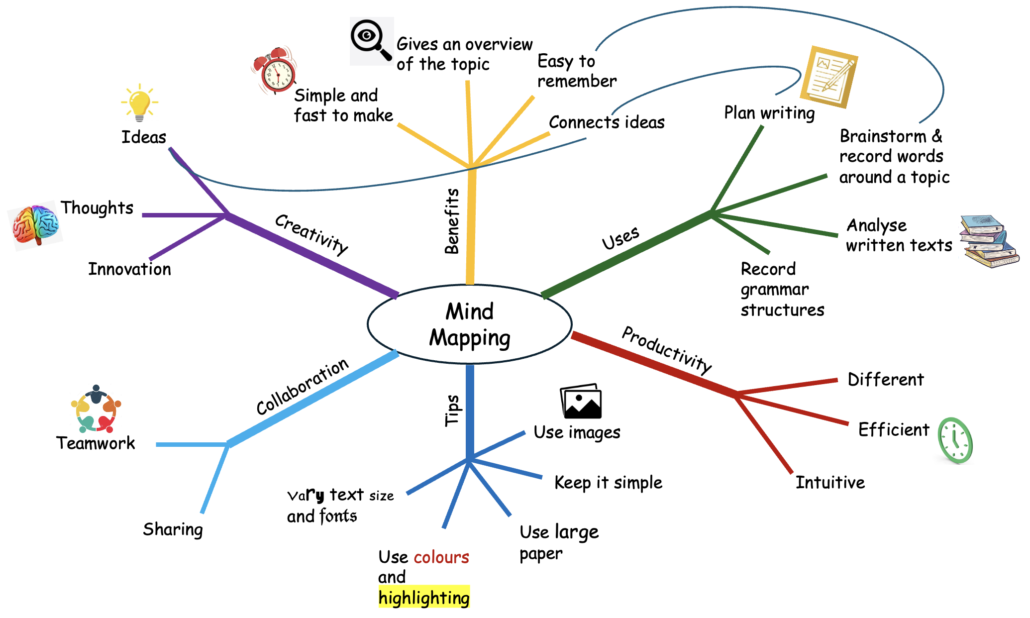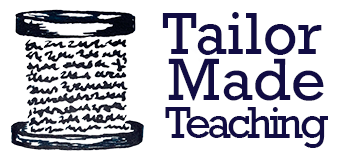
Study Strategies: Mind Mapping
Mind mapping is one of the most commonly used study strategies over the last few decades. Developed by Tony Buzan, a British author, and educational consultant, in the 1970s, it has spread globally. Buzan developed mind mapping as a tool to help individuals enhance their memory, creativity, and productivity.

How to Use Mind Mapping:
-
Start with a Central Idea: Begin by identifying the main concept you want to explore. This could be a vocabulary area, a grammar rule or any other language-related topic you’re studying.
-
Create Branches for Subtopics: Draw branches from the central idea to represent different subtopics related to the main topic. These subtopics could include key vocabulary words, grammar points, examples, or related concepts.
-
Add Details and Connections: Expand each subtopic by adding more specific details, examples, or explanations. Use lines or arrows to connect related ideas and show the relationships between different concepts.
-
Use Colors and Images: Make your mind map visually engaging by using colors, symbols, and images to represent different ideas and concepts. This can help stimulate creativity and improve memory retention.
-
Review and Revise: Review your mind maps to reinforce your learning. Update your mind map as you learn new information or make connections between different concepts.
Benefits of Mind Mapping:
-
Enhanced Creativity: Mind mapping encourages creative thinking and exploration by allowing you to visually brainstorm ideas and connections.
-
Improved Memory Retention: Because mind maps are visual, information easier to remember.
-
Better Organization: Mind maps provide a framework for organizing complex information, making it easier to understand.
-
Increased Engagement: Mind mapping makes learning more interactive and enjoyable, leading to greater engagement in your work.
Incorporating Mind Mapping into Your Learning Routine:
To incorporate mind mapping into your language learning routine, consider the following tips:
- Use mind maps to brainstorm vocabulary themes, outline essays or presentations, or summarize reading passages.
- Experiment with different mind mapping software or apps to create digital mind maps that you can easily edit and share.
- Collaborate with classmates or language partners to create group mind maps and share ideas and insights.
- Be creative and flexible in your approach to mind mapping, and don’t be afraid to experiment with different styles and techniques.
You can find a free mind mapping tool here, which allows you to share and co-create mind maps with others.


